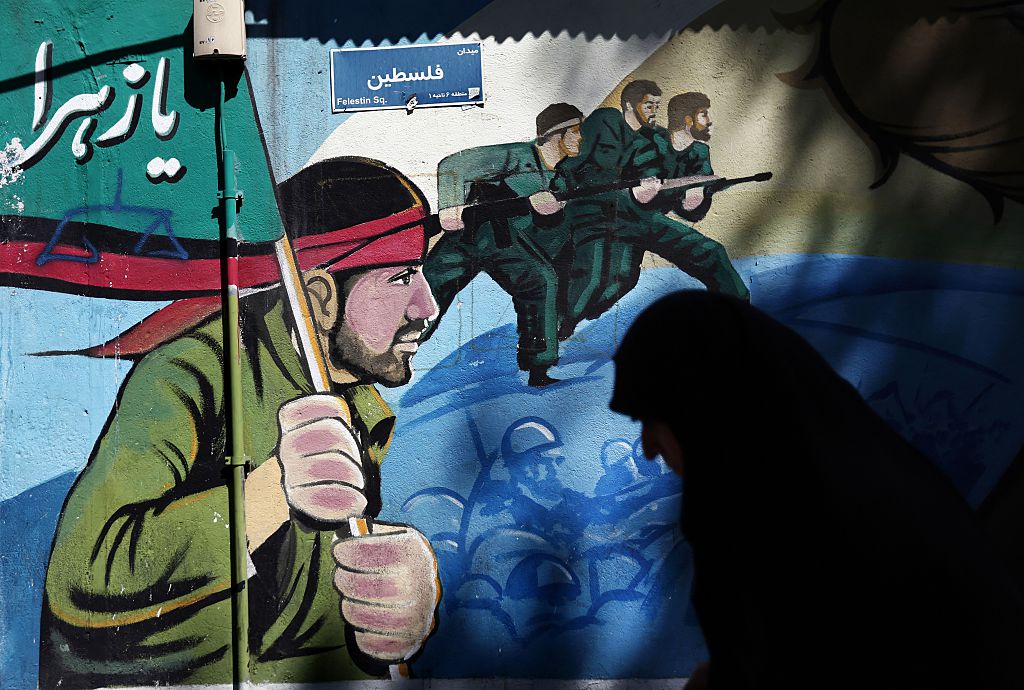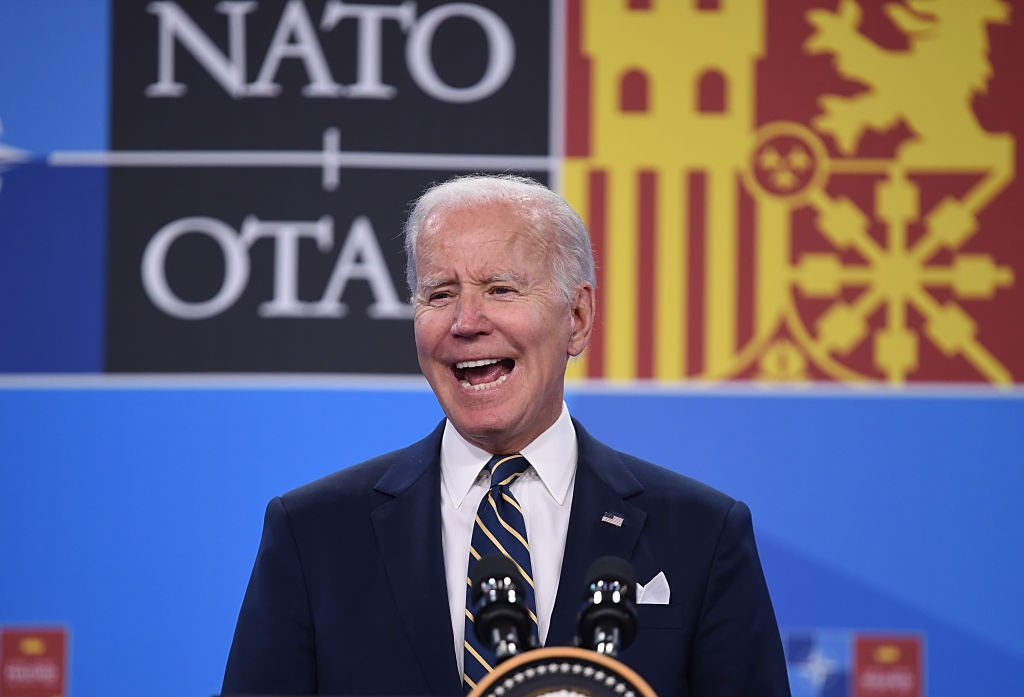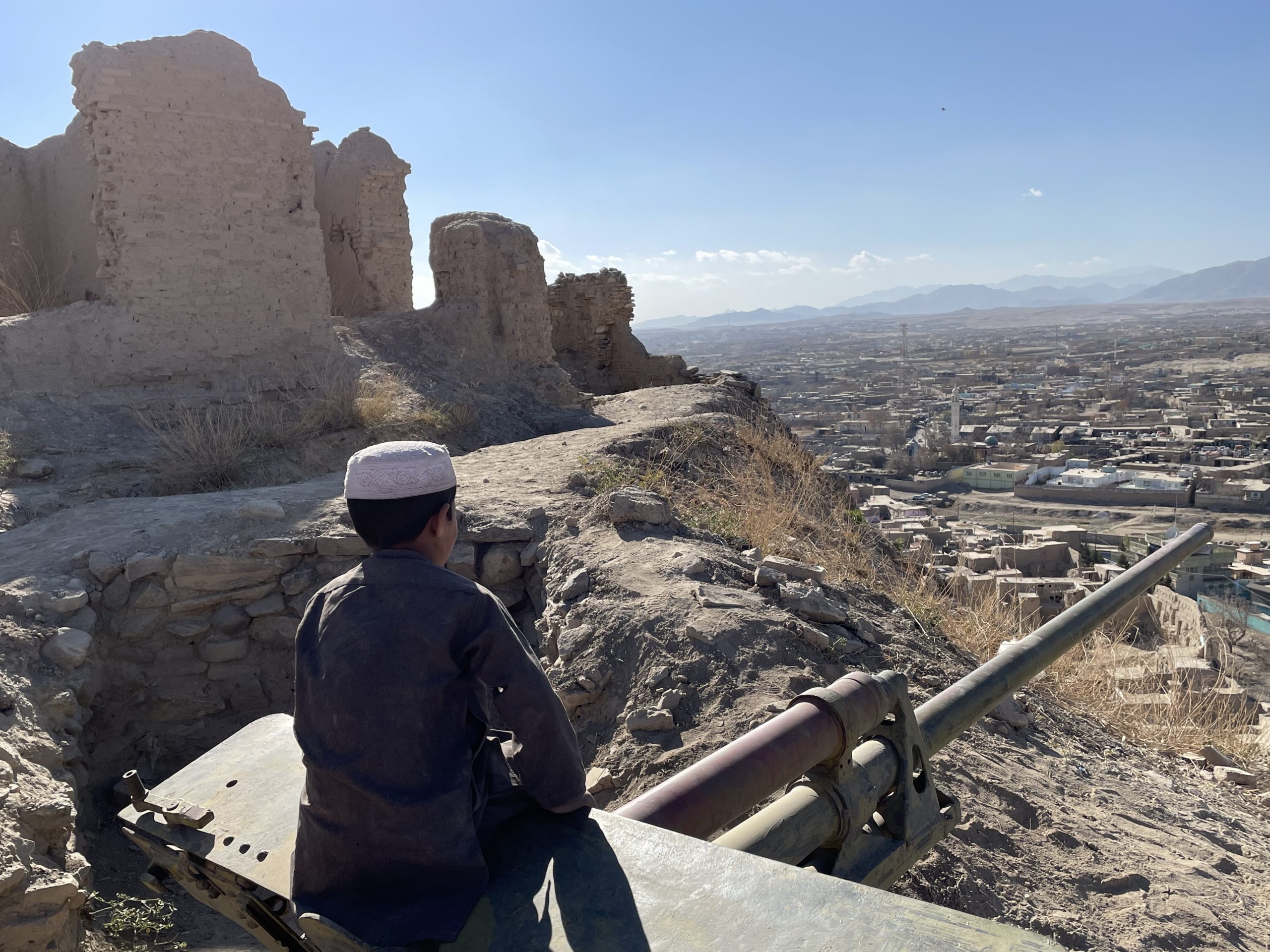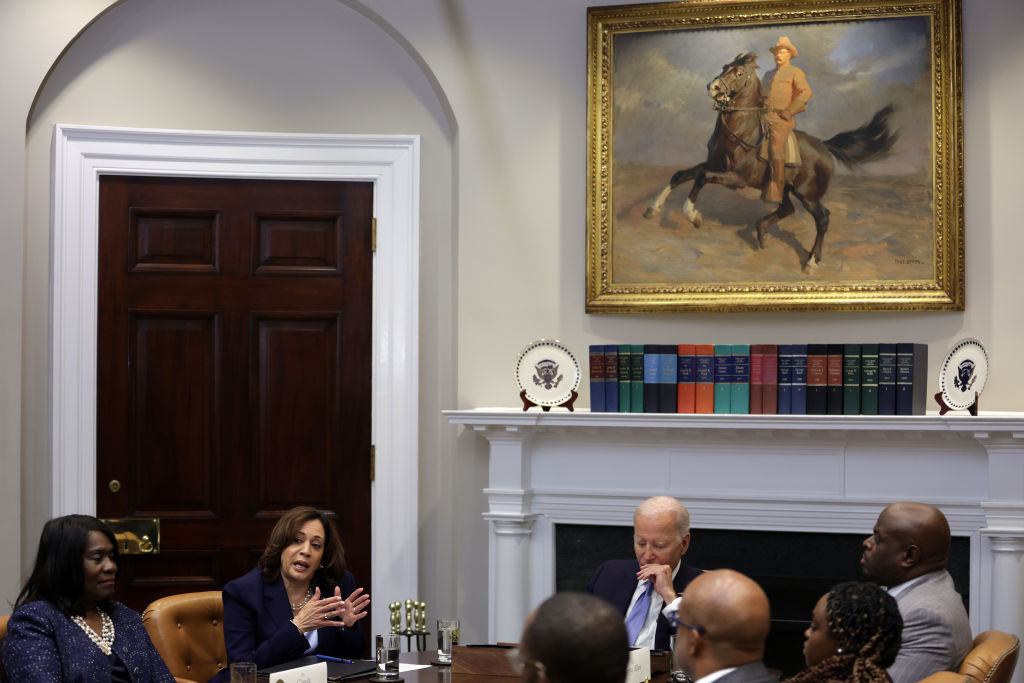The President is economically illiterate, delusional, a liar, or all three about the probability and causes of a recession.
Proxy Master

Iran continues to expand its influence throughout the Near East.
Americans have been killed or wounded from three directions in three different countries in the Middle East in just the last few weeks. The Palestinian terrorist group Hamas killed 30 Americans inside Israel and is holding others hostage. Meanwhile American military installations in Syria and Iraq were targeted repeatedly by missile and drone strikes. If you include naval movements in the Mediterranean and Red Sea, the Americans were attacked, responded to, or were getting ready to respond to threats emanating from five places—Gaza, Syria, Iraq, Lebanon, and Yemen.
All of the local groups perpetrating these actions are closely allied to the Islamic Republic of Iran. Some political observers and wary Americans fear that the United States is going to be dragged into yet another expensive foreign misadventure or that Iran was going to attack the Americans as part of a broader war between Israel and its many adversaries.
The truth is rather more complicated. The actual chances of a hot war between Iran and the United States of America are still relatively low. Or putting it a different way, the chances of the ongoing decades-long low intensity war between Iran and the U.S. abruptly changing its character now and becoming a more direct confrontation still remain low. This is entirely different than a much more likely confrontation between Iran and Israel.
The pattern was set decades ago, in the eighties. Forty years ago, Iran struck the U.S. Marine Barracks in Beirut, killing 241 Americans. It is incredible to consider the fact that the United States did not respond. Iran had used a cutout, or rather a cutout of a cutout for the operation. The group claiming responsibility for the barracks bombing was called Islamic Jihad, which was a pseudonym for Hezbollah, the Shia Islamist militia set up by Iran. A joint American-French strike on an Iranian Revolutionary Guard barracks in Lebanon was called off because officials within the Reagan Administration were divided as to Iran’s culpability.
It was only in September 2023 that Ali Tabatabai, the personal representative in Lebanon of the Iranian Supreme Leader Khamenei, confirmed in an Iranian News Agency interview that it indeed had been Iran which ordered the Beirut operation. This part of the interview was subsequently deleted from the IRNA website shortly after publication.
A vivid example of how not to confront the United States occurred a few years later, during the so-called “Tanker War” in the Persian Gulf, part of the Iran-Iraq War waged between Iraq’s Saddam Hussein and Khomeini’s Iran. In April 1988, in response to Iranian naval mining of international waters that damaged an American warship, the Americans launched Operation Praying Mantis, which struck a wide range of Iranian naval targets. It was the first time since World War Two that the U.S. Navy had sunk a major surface combatant when the British-built Iranian frigate Sarhand was struck by Harpoon anti-ship missiles. This is the closest that the U.S. and Iran have come to a conventional hot war.
In sharp contrast to direct confrontation, the use of proxies in carrying out operations against the Americans, giving Iran a certain amount of cover, has served the regime very well. Such ambiguity sometimes prevents a response, as in Beirut. But even when there is a response, it is almost always the local proxy that is targeted and not Iran itself.
A rare exception to this rule was the chain of events that led to the liquidation of Iranian Quds Force commander Qassem Soleimani in January 2020. An Iranian-controlled militia had struck an American base, killing an Iraqi-American contractor. The Trump Administration responded with an airstrike on the militia which killed several fighters. The militias then responded by attacking the U.S. Embassy in Baghdad which led President Trump to authorize the attack that eliminated Soleimani and his close Iraqi collaborator Abu Mahdi al-Muhandis, one of the most powerful men in Iraq. In true Trumpian fashion, the American President threatened to attack Iran itself if the escalation continued. Either through native cunning or blind luck, Trump had—briefly—lifted the veil separating the local proxy from the puppet masters in Iran.
And it was Soleimani himself who was credited with developing the network of heavily armed proxy militias throughout the region that allow Iran to project power beyond its borders. When Iran used its proxies in 1983 against the Beirut Marine Barracks, anti-Iranian regimes existed in Iraq and Yemen, and Assad’s Syria was not interested in being a direct battlefield in a war against Israel or the Americans. Forty years later, Yemen and Iraq are ruled by pro-Iranian regimes and Assad’s Syria is much more dependent on Iran and Hezbollah than it was in 1983. And Iran was able to forge intimate ties with non-Shia Palestinian terrorists like Hamas. The tactics and equipment used by Hamas in their recent attack on Israel were pioneered by Iran or its proxies, notably Hezbollah, the main Arab enforcer of Iran’s regional presence. Given recent developments in relatively cheap offensive strike capacity, the Iranian proxies in Lebanon, Syria, Iraq, Yemen, and in Gaza all have Iranian-pattern missiles and drones capable of striking both Israel and various American targets in the region.
In the euphoria immediately after the disastrous overthrow of the Baathist regime in Iraq, American Neocons dreamed of overthrowing the Iranians. George W. Bush dubbed Iran, Iraq, and North Korea the “axis of evil” in his 2002 State of the Union Address. Today, some speak of Iran, Russia and China as a new “axis of evil.”
To say that the Iranian regime is evil in many ways is patently obvious. Not only does it oppress women and execute gays, but it also represses ethnic minorities and a growing Evangelical Christian convert underground. It is the world’s chief purveyor of antisemitic propaganda and supports various anti-American leftist regimes in Latin America. There is something for everyone to despise about the regime.
The question is what, if anything to do about it. Best of all would be if the Iranian people themselves were able one day to actually overthrow the regime. While the Neocon Right dreamed of overthrowing the Mullahs—a laughable thought after the expensive debacles in Iraq and Afghanistan—the Obama and Biden Administrations tried to appease Iran with tens of billions of dollars in sanctions relief in the hopes that over time the regime would moderate its behavior and become, if not pro-American, at least a “responsible” regional power whose equities in the region would be recognized and respected by the West as part of an illusory equilibrium in the Near East.
We’ve now had alternating right and left-wing fantasies about Iran, to overthrow or to appease. Behind both fantasies is a grim reality. Iran is a country with many problems, including a sclerotic dictatorship that could come apart at the seams. But it is also—in relative terms—a rising power with regional ambitions, a nation of almost 90 million people with its own energy supplies, educated middle class, industrial base, and arms industry. In this sense, it resembles its rivals Turkey, Israel, and potentially Saudi Arabia as nations dreaming of regional power if not hegemony.
The 44-year-old clerical regime ostensibly ruling the country is widely despised. But the discredited mullahs serve as useful frontmen for what are becoming the country’s real rulers, the Islamic Revolutionary Guard Corps (IRGC) and their internal and regional military-industrial empire. As long as the country’s rulers remain more or less united, they will be difficult to overthrow from within, though they certainly deserve to be. The regime’s goals have remained consistent no matter who is in charge—to defeat or destroy Israel and drive the Americans from the region.
Unless Iran seeks to challenge the Americans directly—a very unlikely eventuality—leading to open conflict between the two countries, it will probably remain the master of a potent, flexible proxy network that will allow it to lash out at its adversaries at arm’s length while keeping vast swathes of the Arab world under heel. A ramshackle, messy empire, but an empire none the less.
The American Mind presents a range of perspectives. Views are writers’ own and do not necessarily represent those of The Claremont Institute.
The American Mind is a publication of the Claremont Institute, a non-profit 501(c)(3) organization, dedicated to restoring the principles of the American Founding to their rightful, preeminent authority in our national life. Interested in supporting our work? Gifts to the Claremont Institute are tax-deductible.
U.S. foreign policy leaders have become addicted to outsourcing atrocities.
Securing America’s interests should be the guiding principle of our nation’s foreign policy.



